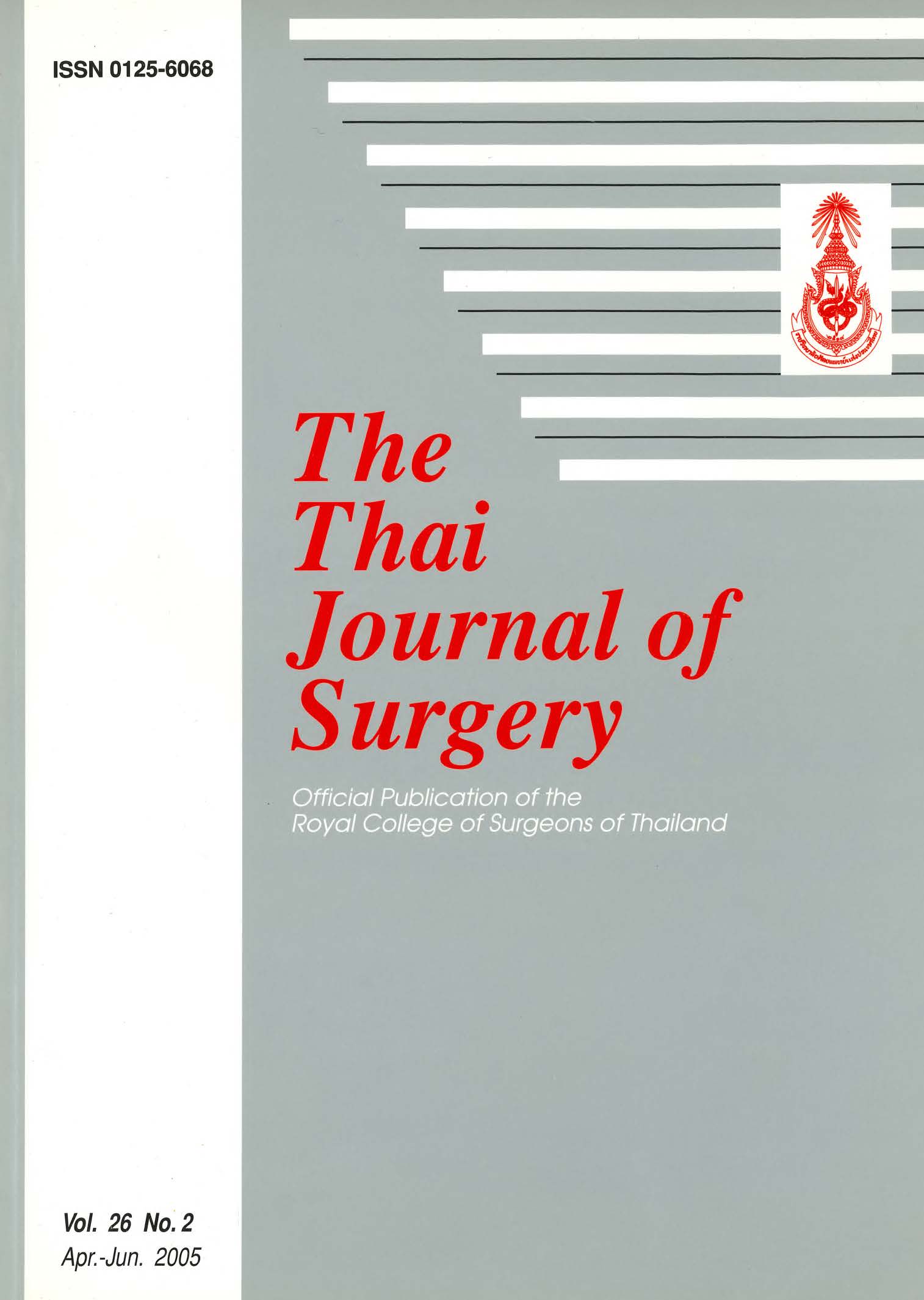Sturge- Weber Syndrome : A Case with Choroid Plexus Hemangioma
Abstract
Sturge-Weber syndrome (encephalotrigeminal angiomatosis) is an uncommon neurocutaneous disorder. Not many cases of this syndrome have been under the care of neurosurgeons. The syndrome is characterized principally by facial and leptomeningeal angiomas. Hemorrhage from intracranial angiomas in this syndrome is rare. In contrast, epilepsy occurred in nearly every published case. The only known indication for neuro surgical management is to control intractable seizures. This report describes a case of Sturge-Weber syndrome who presented with clinical subarachnoid hemorrhage. The angioma involving the choroid plexus, which was a probable cause of Ieakage, was demonstrated by computed tomography and surgical removal was performed. Histologic examination revealed a hemangioma of the cavernous type. The literature was reviewed.
References
2. Weber FP. Right-sided hemi-hypertrophy resulting from right-sided congenital spastic hemiplegia, with a morbid condition of the left side of the brain, revealed by radiograms. J Neurol Psychopathol 1992; 3: 134-9.
3. Krabbe KH. Facial and meningeal angiomatosis associated with calcifications of the brain cortex: clinical and anatomopathologic contributions. Arch Neurol Psychiat 1934;32: 737-55.
4. Alexander GL, Norman RM. The Sturge-Weber syndrome. Bristol: John Wright & Sons; 1960.
5. Bentz MS, Towfighi J, Greenwood S, et al. Sturge-Weber syndrome. A case with thyroid and choroid plexus hemangiomas and leptomeningeal melanosis. Arch Pathol Lab Med 1982;106: 75.
6. Anderson FH, Duncan GW. Sturge-Weber disease with subarachnoid hemorrhage. Stroke 1974; 5: 509-11.
7. Streeter GL. The developmental alterations in the vascular system of the brain of the human embryo. Contr Embryol Carneg Inst 1918: 8: 5-38.
8. Enjolras O, Riche MC, Merland JJ. Facial port-wine stains and Sturge-Weber syndrome. Pediatrics 1985: 76: 48-51.
9. Johnston MC. A radioautographic study of the migration and fate of cranial neural crest. Anat Rec 1966; 156:143-55.
10. Le Douarin NM. The neural crest in developmental and cell biology series. Cambridge University Press; 1982, Vol.12.
11. Happle R. Lethal genes surviving by mosaicism: a possible explanation for sporadic birth defects involving the skin. J Am Acad Dermatol 1987; 16: 899-906.
12. Cibis GW, Tripathi RC, Tripathi BJ. Glaucoma in Sturge-Weber syndrome. Ophthalmology 1984;91: 1061-71.
13. Uram M, Zubillage C. The cutaneous manifestations of Sturge-Weber syndrome. J Clin Neuroophthalmol 1982; 2:145-8.
14. Taveras JM, Wood EH. Diagnostic neuroradiology. Baltimore: Williams & Wilkins Co.; 1964.
15. Bentson JR, Wilson GH, Newton TH. Cerebral venous drain-age pattern of the Sturge-Weber syndrome, Radiology 1971; 101: 1111-8.
16. Probst FP. Vascular morphology and angiographic flow patterns in Sturge-Weber angiomatosis: facts, thoughts and suggestions. Neuroradiology 1980; 20: 73-8.
17. Nellhaus G, Haberland C, Hill BJ. Sturge-Weber disease with bilateral intracranial calcification of birth and unusual pathologic findings. Ada Neurol Scand 1967; 43: 314.
18. Johnson JF. Hemangiomatous calvarial trabecular pattern in newborns. Am J Neuroradiol 1981; 2: 48.
19. Paller As. The Sturge-Weber syndrome. Pediatr Dermatol 1987;4:300-4.
20. Chamberlain MC, Press CA, Hesselink JR. MR imaging and CT in three cases of Sturge-Weber syndrome: prospective comparison. Am J Neuroradiol 1989; 10: 491-6.
21. Farman AG, Wilson S. Diagnostic imaging in Sturge-Weber syndrome. Dentomaxillofac Radiol 1985; 14: 97-100.
22. Maki Y, Semba A. Computed tomography of Sturge-Weber disease. Childs Brain 1979; 5: 51-61.
23. Marti Bonmati L, Menor F, Poyatos C, et al. Diagnosis of Sturge-Weber syndrome: comparison of the efficacy of CT and MR imaging in 14 cases. Am J Roentgenol 1992:158.867-71.
24. Wasenko JJ, Rosenbloom SA, Duchesneau PM, et al. The Sturge-Weber syndrome: comparison of MR and CT characteristics. Am J Neuroradiol 1990; 11:131-4.
25. Falconer MA Ruschworth RG. Treatment of encephalotrigeminal angiomatosis by hemispherectomy, Arch Dis Child 1960; 35: 433-47.
26. Hoffman HJ, Hendrick EB, Dennis M, et al. Hemispherectomy for Sturge-Weber syndrome. Childs Brain 1979; 5: 233-48.
27. Garcia JC, Roach ES, McLean WT. Recurrent thrombotic deterioration in the Sturge-Weber syndrome. Childs Brain 1981;8:427-33.
28. Stimac GK, Solomon MA, Newton TH. CT and MRI of angiomatous malformations of the choroid plexus in patients with Sturge-Weber disease. AJNR 1986; 7: 623-7.
29. Crawford JU, Russell D. Cryptic arteriovenous and venous hamartomas of the brain. J Neurol Neurosurg Psychiat 1956;19:1-11.
30. Doe FD, Shuangshoti S, Netsky MG, Cryptic hemangioma of the choroids plexus: a cause of intraventricular hemorrhage. Neurology 1972; 22: 1232-9.
Downloads
Published
How to Cite
Issue
Section
License
Articles must be contributed solely to The Thai Journal of Surgery and when published become the property of the Royal College of Surgeons of Thailand. The Royal College of Surgeons of Thailand reserves copyright on all published materials and such materials may not be reproduced in any form without the written permission.



